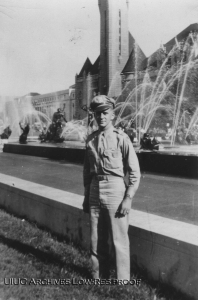In February, the University Archives acquired the papers of Thomas Clark Shedd, Professor of Civil Engineering at the University of Illinois from 1925 through 1958. Comprising correspondence, publications, photographs, a field notebook, and even a slide rule, Shedd’s papers document his research on railway and bridge design as well as his interest in teaching and the development of the structural engineering curriculum. This acquisition is important not only for shedding light on his career and research, but also for his influence on the Department of Civil Engineering (now Civil and Environmental Engineering), especially in terms of its instructional mission.[1] Most notably, his papers include a great deal of correspondence with his colleague and long-time friend, Hardy Cross, Professor of Civil Engineering at the U of I from 1921 to 1937. Shedd’s papers thus complement the University Archives’ substantial collection of administrative records and personal papers relating to civil engineering, including Hardy Cross’ papers.
Continue reading “Thomas Clark Shedd, Hardy Cross, and the “Broad Aspects” of Civil Engineering”
